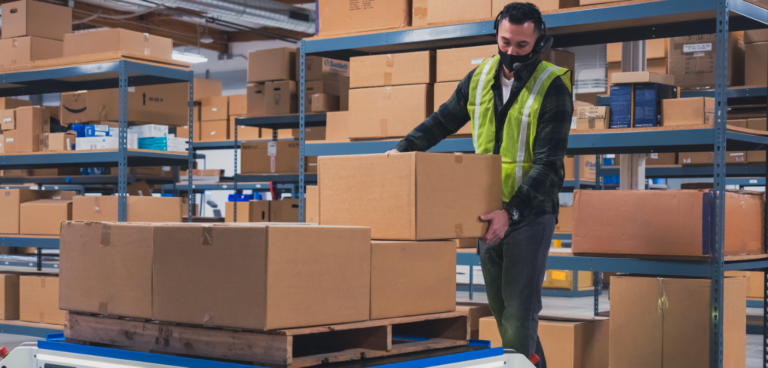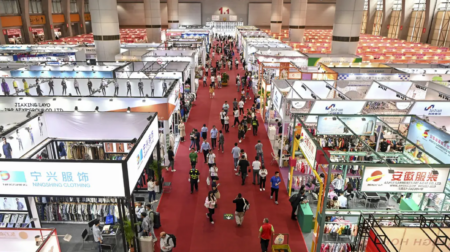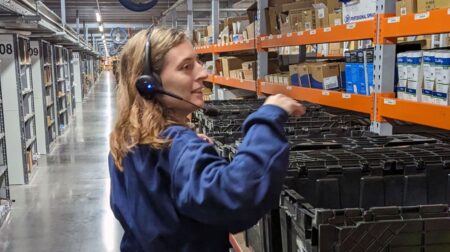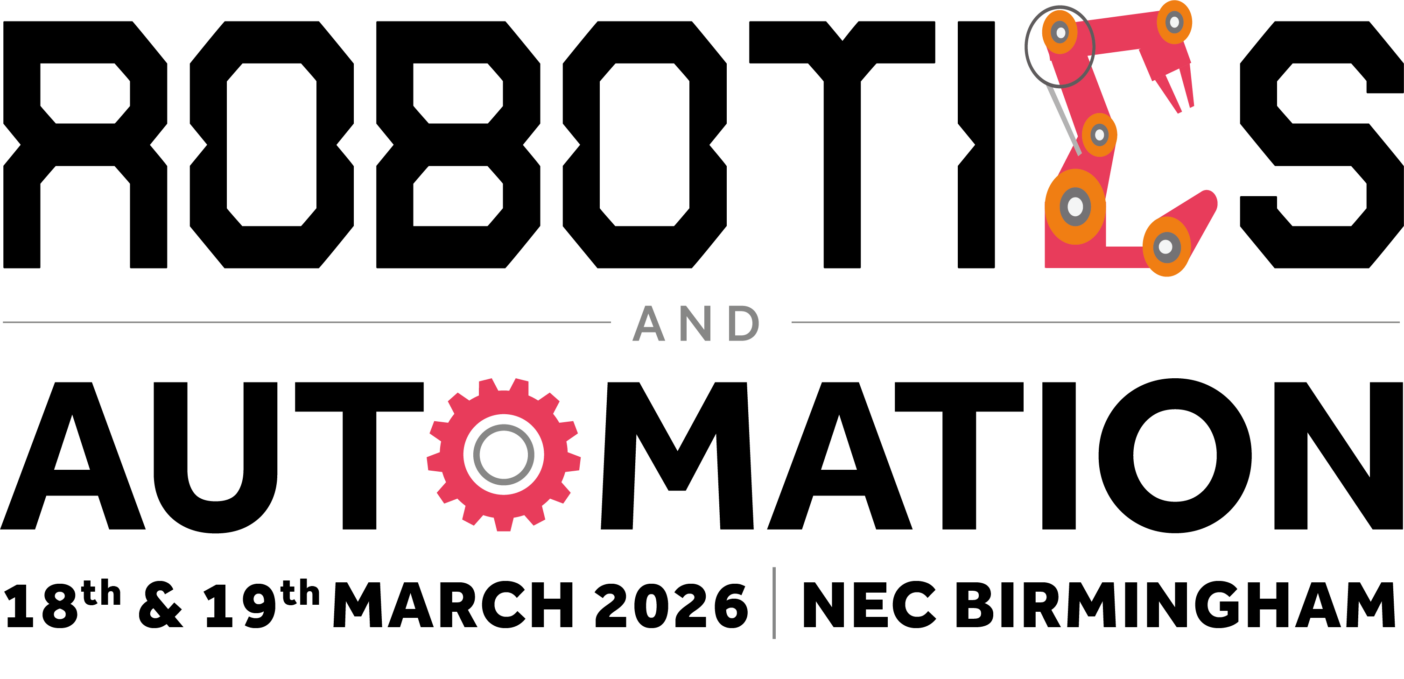Lucas Systems’ business development manager for EMEA, James Hart, explains how artificial intelligence (AI) and machine learning can drive warehouse on-floor travel optimisation…
Labour is the single largest operating cost in most distribution centres (DCs), and travel accounts for a very large percentage of overall labour time, especially when it comes to order picking. The recent Lucas Systems Voice of the Warehouse Worker Insights survey found that workers spent more than one-third (38%) of their day walking to different places between tasks and assignments. Based on those findings, reducing travel time for pickers by optimising their travel path can pay significant dividends.
But minimising total travel time isn’t the only urgent factor to consider. The priority of each pick based on shipping deadlines can compete with travel minimisation and can also change in its level of importance based on the time of day. For example, in the morning, we may want to maximise picking density to improve the efficiency of pickers without worrying too much about deadlines for shipping. As the day progresses, shipping deadlines gain in importance, so adjustments must be made in the prioritisation of each pick, based on the urgency of the deadlines. In the past, this challenge has mainly been addressed utilising trial and error or rules-based approaches for both batching and traversing the warehouse, mainly first-in-first-out and S-shaped pathing.
But using artificial intelligence AI and machine learning-based methodologies can allow you to better utilise the enormous quantities of data collected during the picking process by your warehouse management system (WMS). Utilising an exclusive AI-based process called Dynamic Work Optimisation, the Lucas system learns how to balance priorities to assure efficiency optimisation while still meeting all shipping deadlines with the utmost assurance. Lucas uses order, inventory and location information from the WMS, other systems and Jennifer – the brain, voice and orchestration engine of the Lucas system – and applies real-time optimisation algorithms and warehouse-picking strategies to create optimal work assignments.
Jennifer then uses a virtual model of a facility to define an optimal pick sequence or travel path. In cases where customers leverage these types of AI systems, an average of 50% labour cost savings can be made while simultaneously increasing the probability of meeting outbound shipping deadlines. Illustrating the dramatic benefits and gains organisations can achieve, Southwire, which operates 10 DCs with Lucas Systems, saw productivity gains of 30-50% after implementing an AI-based travel optimisation solution for trolley picking of e-commerce orders.
However, just as important, in a time of constrained budgets and ever-decreasing timelines, is that not only has Dynamic Work Optimisation allowed customers to more than double picking productivity and cut labour hours in half, but it can be implemented without making any changes to warehouse layout or adding expensive automation or robotics, enhancing ROI and speed to value.
As with any implementation of new systems and software, involving the right stakeholders, deciding what processes are needed most to optimise, and defining what success looks like will be foundational to the ultimate success of a project. Those not already exploring or implementing AI solutions within their DC operations run the real risk of falling behind their competition.
For more information, contact James Hart, business development manager, EMEA, Lucas Systems, at hart@lucasware.com, on +44 (0) 289 600 2852, or visit www.lucasware.com
This article was first published in the March 2023 issue of Robotics & Innovation Magazine. Read the original article.









